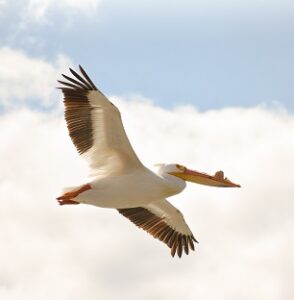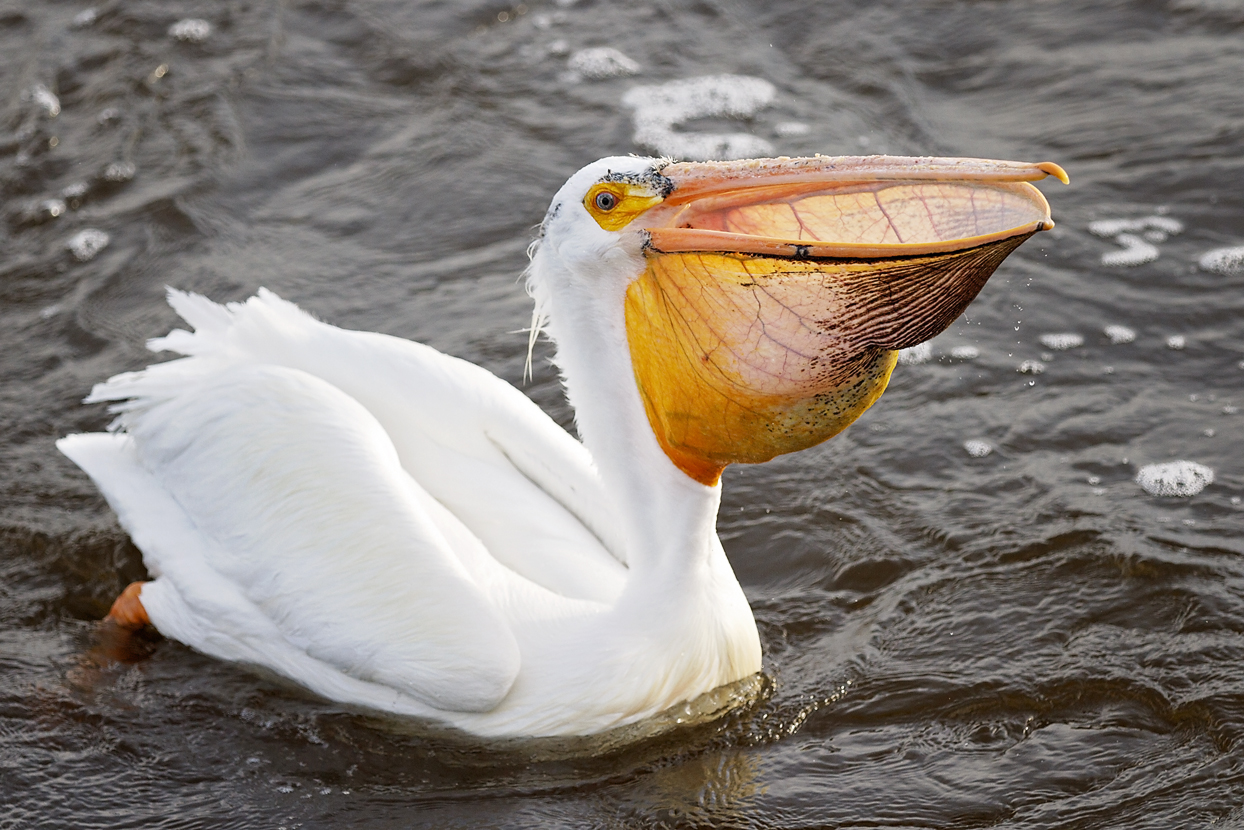Saskatoon residents have special visitors each summer. April through October, pelicans gather by the weir to fish. For the past 26 years, Meewasin has been holding a Pelican Watch Contest with the support of the Saskatoon Nature Society. Each spring, Saskatoon residents can guess the arrival time of the first pelican to Saskatoon to land between the CPR Bridge and the Saskatoon Weird to win prizes. Pelican Watch is more than a contest. It is an opportunity to learn about the pelican and promote conservation in our community.
The American White Pelican is a huge water bird with broad wings, a long neck and a massive bill. They have thick bodies, short legs and square tails. The bird has a long, wide orange bill and black wing tips. During the breading season, adults grow an unusual projection or horn on their upper mandible near the tip of the bill. Pelicans are extremely graceful in the air, and their unusual appearance with a large, pouched beak makes them an attraction for visiting birders.
Where do they live?
Every year, American White Pelicans fly thousands of kilometers in a process called migration; from their nesting sites stretching from California to Guatemala to their summer territory in Saskatchewan. Pelicans typically breed on islands in shallow wetlands in the interior of the continent. They spend winters mainly on coastal waters, bays, and estuaries, or a short distance inland.
Redberry Lake, Saskatchewan is a Migratory Bird Sanctuary, and has been a protected area since 1915. Hundreds of pairs nest on an island in the middle of Redberry Lake, where there is an island appropriately called Pelican Island. The pelicans at Redberry Lake often commute between their nesting area and the weir in the Meewasin Valley.
What are some of their characteristics?
These large, gregarious birds often travel and forage in large flocks, sometimes traveling long distances in V-formations. They soar gracefully on very broad, stable wings, high into the sky in and between thermals. On the ground they are ungainly, with an awkward rolling, but can walk surprisingly quick. Pelicans respond to threats by flying aggressively into a near-stall or, on land, adoring an upright posture and grunting. More severe threats from aerial predators provoke open-billed displays where the pelican lunges forward, jabbing with its enormous bill. Predators include the fox, coyote, gull, raven, Great Horned Owl and Bald Eagle.
The American White Pelican was placed on the endangered species list in the 1960s, mainly because of the use of pesticides like DDT, and were close to the point of disappearing. Now, thanks to conservation efforts, numbers are strong and you can see our feathered friends fishing in the heart of Saskatoon throughout the spring and summer. Spot one and tag @Meewasin!
Donate to Meewasin to help conserve the Pelicans habitat HERE





